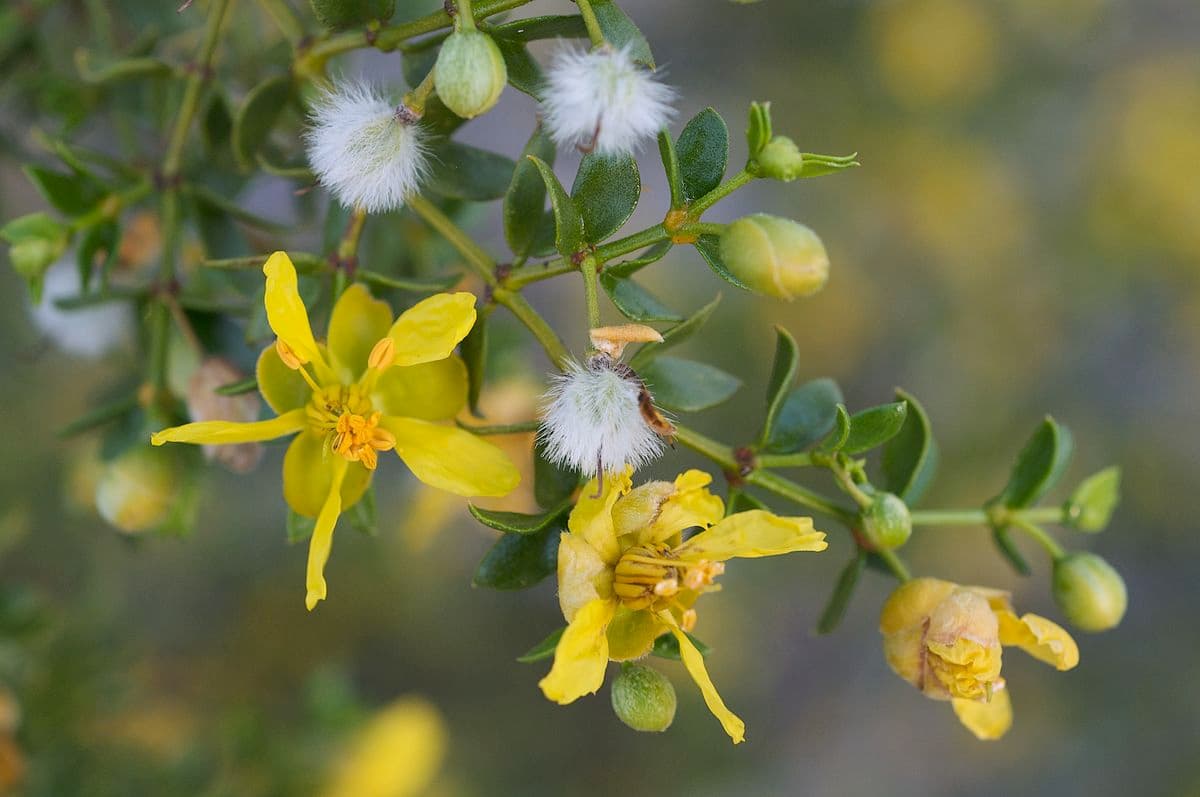
Scientific Name
Larrea tridentata
Common Names
Chaparral, Creosote Bush
Plant Family
Zygophyllaceae
Location
Native to the arid deserts of the southwestern U.S. and northern Mexico. Found in dry, rocky soils and harsh sun. Thrives where most plants cannot. Long-lived and deeply rooted.
Description
Hardy, aromatic desert shrub with resinous, olive-green leaves and small yellow flowers. Has a pungent, creosote-like smell (like rain in the desert). The plant is slow-growing and extremely drought-tolerant.
Uses
Traditionally used for its robust anti-inflammatory, antioxidant, and antimicrobial effects. Tea or extracts of its leaves are employed to ease inflammation in joints, muscles, and connective tissue, mitigating pain in conditions such as arthritis or rheumatism. Its phenolic lignans (especially NDGA) help suppress oxidative stress and reduce inflammatory markers in animal or in-vitro studies. The plant also shows antifungal and antibacterial activity: it has been used topically for skin infections, wounds, fungal irritations, herpes, and externally for acne, eczema, and similar dermal afflictions. It has carminative-like digestive uses in some traditional contexts, helping to soothe mild stomach upset or digestive inflammation, though these are less documented. Additionally, L. tridentata has been used in respiratory conditions, fevers, and for cleansing or “detoxifying” rituals in herbal traditions. However its use internally (as tea or decoction) is more controversial given concerns regarding liver / kidney toxicity in some reports.
Energetics
Drying, warming, intense. Strong mover of stagnant, toxic, or infected conditions — both externally and internally.
Parts Used
Leaf and flower (dried)
Constituents
NDGA (nordihydroguaiaretic acid), lignans, resins, volatile oils. NDGA is a powerful antioxidant but potentially toxic in high internal doses.
Dosage
- Infusion or decoction (external): Strong tea for compress or soak
- Tincture (1:5): 5–15 drops, with supervision if internal
- Infused oil or salve: For athlete’s foot, ringworm, infections
Notes on Use
Primarily used Chaparral topically — it’s incredibly effective against fungal infections, boils, and tough skin eruptions. Internally, it’s a “warrior” herb — very strong and needs to be respected. Not for everyone. Energetically, it feels like desert fire — purifying, but potentially over-drying.
Harvesting
• Leaves and flowers gathered in early spring after rains, when resin is high.
Contraindications
Not for internal use in pregnancy, liver disease, or with pharmaceuticals. Internal use is controversial — long-term use can affect the liver.
Recipes
- Antifungal Salve: Chaparral infused oil with tea tree and myrrh
- Wound Wash: Strong chaparral tea used as external soak